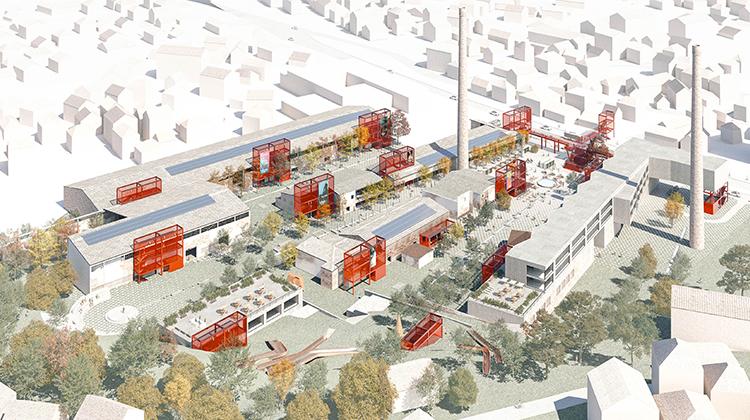Architecture’s Rafi Segal co-leads team to transform Kosovo industrial heritage site into a cultural landmark
An international design team co-led by Rafi Segal, associate professor of architecture and urbanism in the MIT Department of Architecture, has won a competition to transform a former brick factory in Pristina, Kosovo into an urban hub for creativity and innovation. The winning proposal, Art-Tek Tulltorja, was a collaborative effort that included Segal’s firm Rafi Segal A+U; Belgium-based design firm ORG Permanent Modernity; OUD+Architects; and artist Marisa Morán Jahn (SMVisS ’07), an alumna of MIT ACT.
Pristina, the largest city and capital of Kosovo, is the county’s primary tourist destination. The brick factory is also an industrial heritage site. By integrating state-of-the-art facilities with green infrastructure, the design team hopes to set a new sustainability standard in Kosovo.
“Architecture, art, landscape, public space, and sustainable development are fully integrated in this project to transform the former brick factory into a new urban destination centered around the arts and technology,” says Segal. “Art-Tek Tulltorja is a vision that celebrates both new and existing structures to capture the vibrance of Kosovan creativity that looks both to the future and the past.”
According to the design team, the new plan is designed like an “open hand where interior and exterior fingers connect an elevated park to the city, artistic and technological spaces, residents, and visitors.” Additional features of the design include a terraced landscape with channels to control water run-off and the reuse of materials from the former brickyard.
The project’s significance resonates deeply within the community, particularly considering Kosovo’s demographic and economic challenges: nearly half of the population is under 25 years old, and there is a growing need to invest in technology. Art-Tek Tulltorja aims to bridge the education, opportunity, and community gaps by fostering creativity, collaboration, and entrepreneurship, according to the design team.
“Too often the arts are value-engineered out of city-wide projects and become the last things that are sprinkled on top of a project,” says Pristina Mayor Përparim Ram. “Yet the arts are absolutely critical to how we understand ourselves, how we continue to express ourselves, how we foster democracy. I’m thrilled that Art-Tek Tulltorja not only centers artistic and technological innovation in an industrial heritage site at the heart of Pristina — and is designed by an interdisciplinary team of artists, architects, and urbanists.”
Segal directs the SMArchS Urbanism program in the MIT School of Architecture and Planning. His practice engages in design and research on both the architectural and urban scale.
Originally published by Maria Iacobo April 10, 2024 for the School of Architecture and Planning





